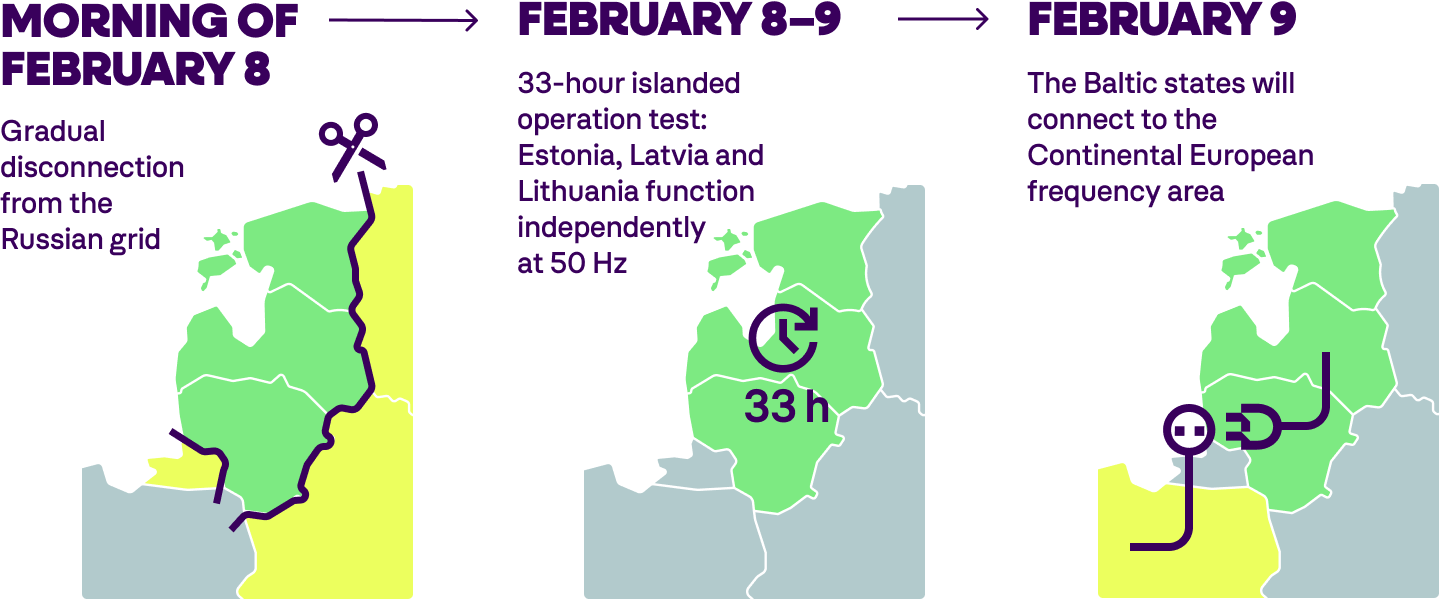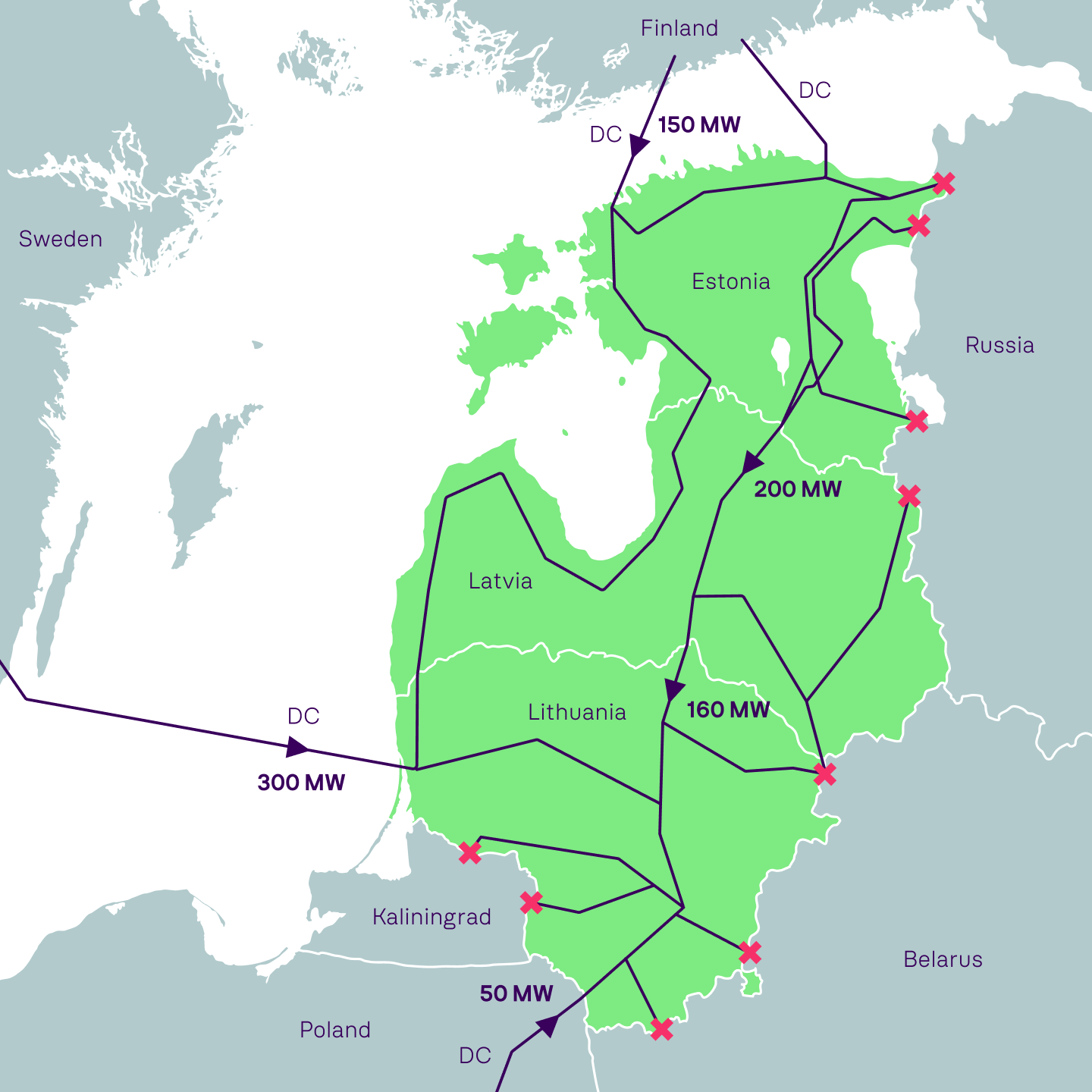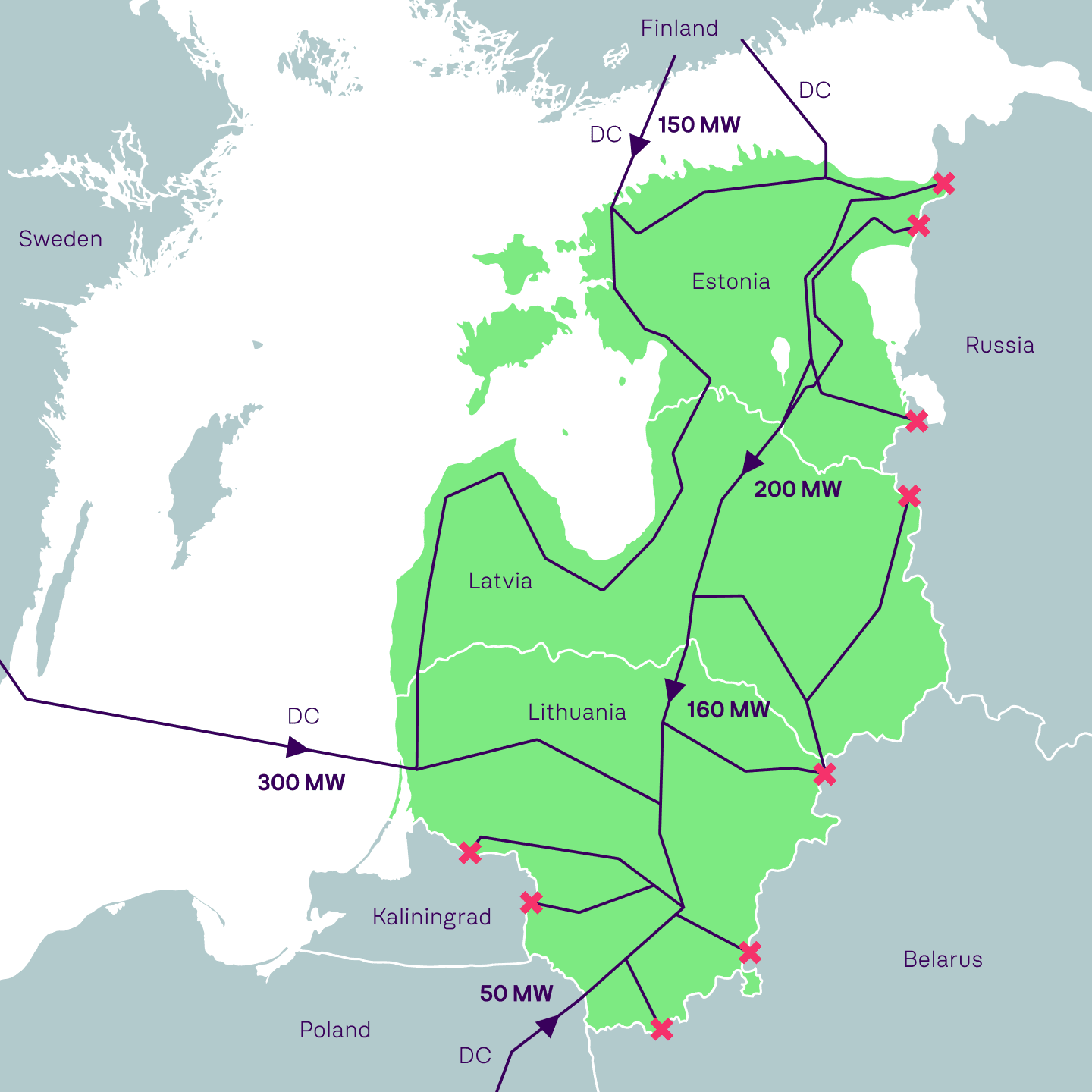Estonia, along with Latvia and Lithuania, will disconnect from the Russian synchronous area on February 8, 2025, and join the continental European synchronous area on February 9.This historic step is crucial for strengthening energy security and expanding the use of clean energy.
But what exactly will happen on February 8? Will the power go out? Will life come to a standstill for two consecutive days? The short answer is – no, it won’t. However, how should one respond when a friend, grandmother, or partner, upon reading the news, asks: What is desynchronization? What benefits does it bring? How does it work? What is an islanded operation test? Is someone attacking Estonia’s islands? And why should I even care about desynchronization?
Therefore, what exactly is desynchronization?
Desynchronization refers to disconnecting Estonia’s electricity system from the frequency area controlled by Russia and Belarus and synchronizing with the Continental European synchronous area. This step enhances energy security, reduces dependency on our eastern neighbour, and allows us to consume electricity whose origin can be verified.
Currently, Estonia, Latvia, and Lithuania are part of the BRELL energy ring, which is managed from Moscow. This means Russia has the technical capability to influence our electricity supply. After desynchronization, the Baltic states will independently manage theirfrequency by using local power plants and energy storage solutions.
How does Estonia benefit from this?
- No external entity will be able to control our electricity supply. Estonia, Latvia, and Lithuania will be in full control of their frequency, ensuring a higher level of supply security.
- This transition improves access to the European electricity market, allowing Estonian producers to sell electricity under better conditions to a broader market.
- The Continental European grid facilitated the integration of renewable energy, which increases the share of clean energy in our system.
How will the desynchronization process take place?
On the morning of February 8, a gradual disconnection from the Russian grid will begin.
- Lithuania will cut ties with the Kaliningrad region and Belarus.
- Latvia will switch off its connections with Russia.
- Estonia’s transmission system operator, Elering, will disconnect the two power lines running through Narva that link Estonia to Russia.
From February 8 to 9, Estonia, Latvia, and Lithuania will undergo a 33-hour islanded operation test, functioning independently and maintaining their frequency at 50 Hz. On February 9, the Baltic states will connect to the Continental European frequency area, completing the transition.

So, what exactly is an islanded operation?
Islanded operation means that Estonia, Latvia, and Lithuania must maintain a stable frequency while covering its electricity consumption.
Stability requires keeping the frequency at 50 Hz, which depends on balancing electricity generation and consumption. If production falls short, the frequency drops. If generation exceeds demand, the frequency rises. Fortunately, Estonia and various energy producers have made significant investments in energy infrastructure to ensure that we can sustain our electricity needs for a certain period independently.

Why should I care about desynchronization?
Would you like to watch the news in the evening, listen to the radio, or relax in an electric sauna? Whether you think about it or not, electricity is an essential service, and without it, daily life would be very difficult. Desynchronization ensures that Estonia can manage its electricity system independently and increase its reliance on local renewable energy sources with traceable origins. This means a more secure supply and cleaner energy for everyone.
What is Sunly doing to ensure a smooth transition?
Sunly is actively contributing to a smooth transition. Firstly, Sunly operates one of Estonia’s few battery storage systems—the 1.7 MW Pikkori battery storage plant, which will immediately provide regulation services to Elering once the aFRR market opens, helping to maintain the stability of Estonia’s electricity system. To participate in this market, storage systems must be able to respond within 30 seconds to balance electricity shortages or surpluses, and our battery is fully capable of doing so.
After desynchronization, the Baltic region will require 109 MW of automatic frequency reserve, and Sunly’s planned 144 MW Risti battery project could cover the entire reserve requirement and provide 20% of all frequency reserves needed across the Baltics.Sunly is also developing hybrid parks in Latvia, which combine wind, solar, and battery storage to create a more balanced and reliable energy supply.
Additionally, we support both industrial and private customers by offering energy storage and renewable energy solutions, ensuring a more sustainable and resilient electricity system for the future.
